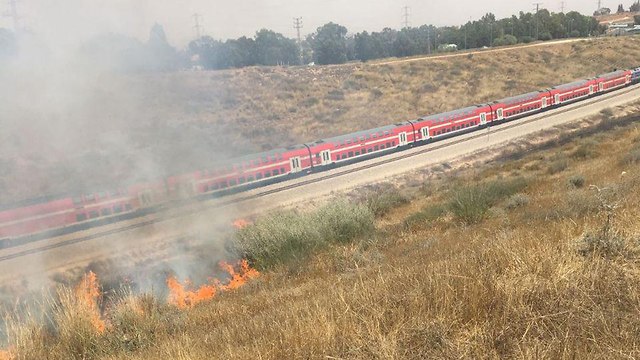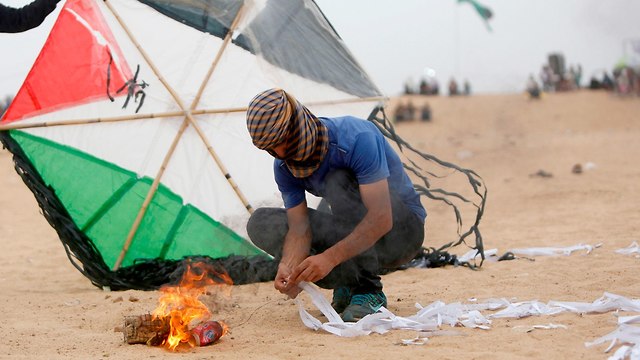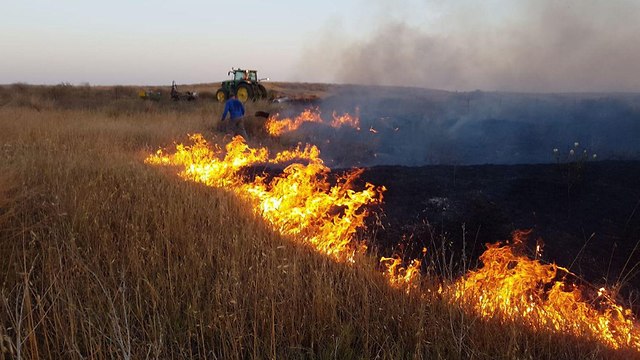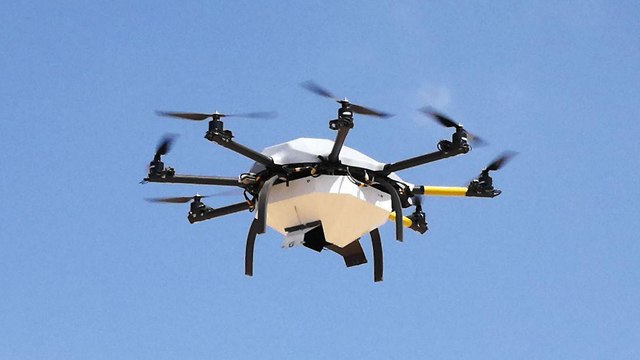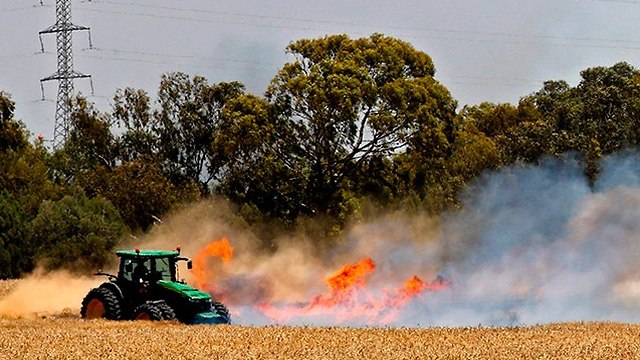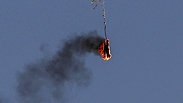
Since then, the "aerial terror offensive" against the Gaza border communities has continued with greater vigor, including some 300 incendiary kites flown into Israel's territory, 100 fires and more than 3,000 acres of wheat destroyed, causing millions of shekels worth of damage to the farmers of the area.
The Eshkol and Sha'ar HaNegev Regional Councils' communities and farmlands under attack include Kissufim and Be'eri forests, Kibbutzim Nir Oz, Kerem Shalom, Sufa, Kfar Aza, Sa'ad, Mefalsim, Erez, and Gevim.
The Eshkol and Sha'ar HaNegev Regional Councils' communities and farmlands under attack include Kissufim and Be'eri forests, Kibbutzim Nir Oz, Kerem Shalom, Sufa, Kfar Aza, Sa'ad, Mefalsim, Erez, and Gevim.
The modus operandi has been the same in all the incidents causing fires: During the Gaza border riots, terrorists attached Molotov cocktails and other incendiary objects to kites and flew them into Israel.
Hundreds of drones were developed and purchased within several days by the IDF to aid intercept the incendiary kites.
The Defense Ministry's Administration for the Development of Weapons and Technological Infrastructure (Maf'at) managed to provide within several days new operational solutions assembled on existing drones and on those which are being currently developed by the "Aeronautics" security industry, such as the "Pegasus 120."
"Pegasus 120" can carry up to 75 Kg, and was tested for the purpose of carrying cargo supplies, ammunition and fuel to forces maneuvering deep inside the enemy's territory as part of the Northern Command's military exercise last year.
Nevertheless, it seems the incendiary kites phenomenon is growing stronger. Last Wednesday, several kites flown into Israel caused serious fires across the Gaza border communities.
The Gaza border communities' farmers are dealing on a daily basis with putting out fires instead of taking care of their harvest. Recently, they decided to hold the harvest earlier than planned so the wheat wouldn't be destroyed by fires caused by the kites.
"We are frustrated with the situation, it has become real terror. We are coping with this phenomenon on a daily basis," one of the farmers said.
"When a fire breaks out, we don't wait for the firefighting forces and use our own equipment (to put out the fire) otherwise the wheat would be completely destroyed and entire fields would disappear," he explained.
"The right thing is to collaborate with the firefighting forces, but without our efforts the damage would have been much more severe," he added.
Finance Minister Moshe Kahlon visited the western Negev communities two weeks ago and said, "Those who fly incendiary kites must be treated with the same severity as those who launch rockets into Israel."
Kahlon was accompanied by a property tax representative during his visit and promised that farmers would be compensated for the damages caused to their wheat fields.
In addition, the region authorities' heads have sent messages demanding the government to compensate them for their damaged "down to last shekel."
They have also asked for the matter to be among IDF's top priorities.
The fight against the relatively new threat consists of both offensive and defensive actions by the IDF including aerial attack of Hamas's posts as retaliation to launching incendiary kites into Israel.
The IDF's Spokesperson's Unit said after one of the retaliatory attacks, "The IDF will continue to fight against terror above and below the ground.
"The IDF considers the Hamas terror organization as solely responsible for what is happening in Gaza and outside of it," the statement added.















